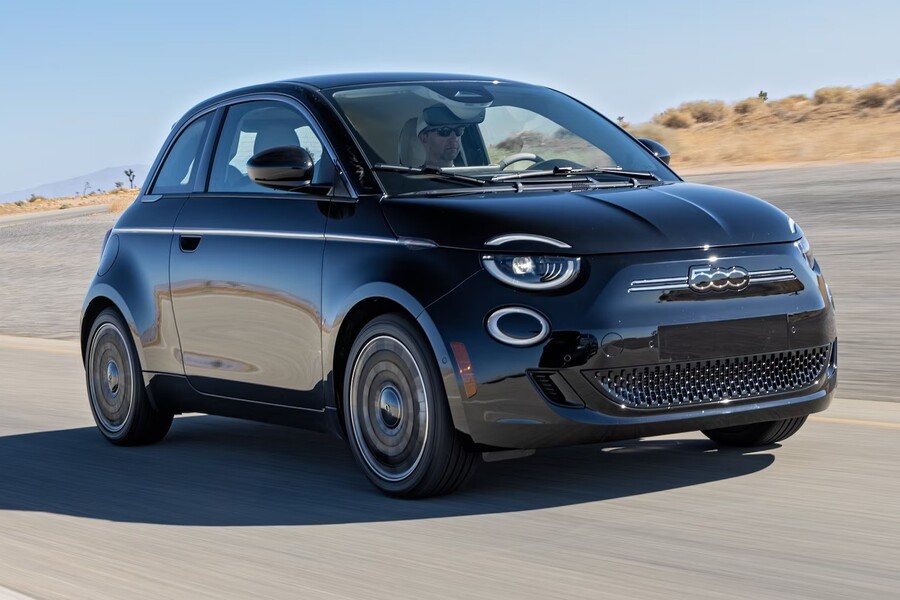Fiat, the iconic Italian automaker known for its stylish and compact city cars, is plotting a surprising expansion of its limited U.S. lineup — even as it currently sells just one model stateside: the all-electric Fiat 500e. Despite low sales and a growing dominance of SUVs and trucks in the American market, Fiat isn’t ready to bow out yet. In fact, the brand is working on bringing a hybrid version of the Fiat 500 to life, signaling a broader ambition to reinvigorate its relevance globally and possibly, eventually, in the United States.
A Brand Many Thought Was Gone
In a market where quirky, subcompact cars have largely vanished in favor of larger, more utility-focused vehicles, Fiat’s near-silent presence has raised eyebrows. Once offering models like the 500X crossover and the 124 Spider convertible (co-developed with Mazda), the brand now hangs by a thread in the U.S. with the 500e — a small, stylish, but limited-range electric vehicle.
However, reports from Reuters suggest Fiat’s story is far from over. Its parent company, Stellantis, is actively developing a hybrid version of the Fiat 500, with early production already underway in Italy. Pre-production units are reportedly being assembled at Fiat’s Mirafiori plant in Turin, and full-scale production could begin as early as November 2025.
What’s Under the Hood?
The new model will likely ride on the same STLA City platform as the 500e — a modular architecture Stellantis designed for small EVs — but it’s now being adapted to accommodate internal combustion technology. According to automotive insiders, the new hybrid setup will be based on the small-displacement, mild-hybrid systems used in Fiat’s previous-generation 500 in Europe. These systems pair a tiny petrol engine with an electric motor, aiming for improved fuel efficiency without the range anxiety that haunts pure EVs.
Will the Hybrid 500 Come to the U.S.?
Despite the optimism surrounding Fiat’s global hybrid strategy, Stellantis has no current plans to bring the hybrid 500 to the U.S., a spokesperson confirmed when contacted. This decision comes despite mounting evidence that the American electric vehicle market is softening, with some consumers expressing growing concerns over range, charging infrastructure, and pricing.
That trend is especially problematic for niche EVs like the Fiat 500e. While it scores high on cuteness and urban practicality, it lags behind competitors in range and value. For comparison, a significantly larger and more versatile Chevrolet Equinox EV offers nearly double the driving range of the 500e for roughly the same price.
With U.S. EV adoption showing signs of a plateau and hybrid sales on the rise, Fiat’s move to develop a hybrid 500 could be a timely pivot. The brand might eventually reconsider its current stance on the American market if demand for smaller, fuel-efficient vehicles grows in the wake of changing economic and environmental factors.
Why This Matters
Fiat’s hybrid expansion represents more than just a product refresh — it’s part of a broader Stellantis strategy to revive Italian manufacturing, support Europe’s industrial base, and diversify vehicle offerings in response to evolving global consumer habits. For American consumers, it’s also a reflection of the uncertain EV landscape: while electric cars continue to gain traction, many buyers are increasingly open to hybrids as a more convenient stepping stone to full electrification.
If Fiat sees success with the hybrid 500 in Europe, a U.S. launch may follow, especially if Stellantis aims to fill a void in the shrinking segment of affordable, stylish, fuel-efficient cars.
Final Thoughts
Fiat’s bet on a hybrid 500 might seem small — both literally and figuratively — in a market dominated by high-riding behemoths and Tesla-led EV competition. But for city dwellers, young buyers, and brand loyalists craving personality in a practical package, this hybrid rebirth could be the spark that reignites interest in the Italian automaker’s once-beloved badge.
For now, U.S. drivers will have to wait and see whether Stellantis will reconsider its decision and bring this potential small-car savior across the Atlantic.

